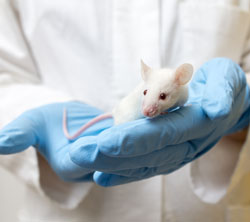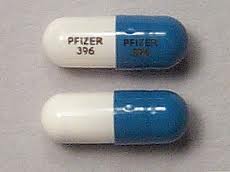Statins Reduce Drug-Craving in Mice
 Statins are drugs that are typically used to lower cholesterol. Recent research on the drugs has focused on their effects on the brain.
Statins are drugs that are typically used to lower cholesterol. Recent research on the drugs has focused on their effects on the brain.
In 2015 Claudia Chauvet and colleagues reported in the journal Neuropsychopharmacology that the brain-penetrating statins simvastatin and Atorvastatin reduced cocaine seeking behaviors in mice that were taught to self-administer cocaine and then were denied access to it for 21 days compared to pravastatin, a statin that does not penetrate the brain as thoroughly. The researchers found that the brain-penetrating statins also reduced nicotine seeking, but not food reward seeking. The statins also worked in mice that had stopped seeking cocaine but relapsed due to stress, allowing them to abstain from cocaine seeking again.
Statins are considered a very safe treatment in humans. The ability of statins to prevent relapse to addictions in mice may mean that one day they could be used to treat addictions in people as well. A review article by Cassie Redlich and colleagues in the journal BMC Psychiatry in 2014 indicated that statins may reduce recurrence of depression in people. The researchers found that simvastatin had a protective effect while Atorvastatin was associated with increased risk of depression, so the choice of statins may be important for both depression and addiction.
Bupropion Plus Naltrexone Reduces Brain Response to Food Cues
The combination of antidepressant bupropion (Wellbutrin) and naltrexone (Revia), a drug that helps alcoholics resist the craving for alcohol, can help patients keep their weight down. Last year we summarized an article by Smith et al. in the journal Diabetes, Obesity, and Metabolism that showed that obese patients with diabetes treated with the combination of bupropion and naltrexone had excellent weight loss and reduction in body fat compared to those treated with either drug alone or with placebo.
A more recent study by G. J. Wang et al. published in the International Journal of Obesity in 2013 shows that the combination of 360mg of bupropion sustained release and 32mg of naltrexone sustained release works by reducing patients’ response to food cues. Forty women were shown a video of their favorite food being prepared, which stimulated parts of the brain associated with visual stimuli and other functions. Those who received the combination of naltrexone and bupropion had lessened hypothalamic response to the videos compared to those who received placebo, and also showed activity in parts of the brain associated with inhibitory control (the anterior cingulate), internal awareness (the superior frontal cortex, the insula, and the superior parietal cortex), and memory (the hippocampus).
Editor’s Note: It looks like the drug combination prompts the brain to say, “Wow, that looks good, but maybe I shouldn’t take in any more calories today.”
Malnutrition Early in Life Has Lasting Effects
Severe malnutrition in the first year of life even when corrected for the rest of a person’s life leaves a legacy of permanent cognitive deficits, marked deficits in attention, and increases in depression, conduct disorders, and medical disorders compared to carefully matched controls. Jamina Galler, a researcher at Harvard Medical School, gave a plenary talk at the 2013 meeting of the American Academy of Child and Adolescent Psychiatry on the long-term effects of even short-term childhood malnutrition, including marasmus (calorie deficiency) and kwashiorkor (protein deficiency).
Galler’s studies followed three generations of people born in Barbados and observed the consequences of prior malnutrition, which was completely eliminated in Barbados by 1980. The consequences of malnutrition in the first year of life not only affected the first (G1) generation, but subsequently their offspring in the G2 generation who also suffered an excess of attention-deficit hyperactivity disorder, low IQ, and low annual income into adulthood. That is, the early malnutrition had transgenerational effects.
Malnutrition is a huge problem worldwide and is especially bad in sub-Saharan Africa and some parts of Asia. Globally, malnutrition accounts for 50% of the deaths of children under age five. However, even in the US hunger is a problem for one in four children, or about 16 million individuals, and the long-term consequences of hunger remain to be further studied.
Studies in animals indicate that early malnutrition has epigenetic effects that can be passed on to four future generations before they are reversed. Epigenetic effects refer to environmental factors that cannot change the sequence of DNA, but change how easily it is transcribed by adding or taking away acetyl and methyl groups on DNA and histones, the structures around which DNA is wound. Malnutrition (defined as 6–8% casein, a type of protein, in the diet instead of the normal 25%) in rodents affects cognitive abilities and blood pressure and can lead to diabetes, obesity, and other metabolic abnormalities. The next generation is also affected because a previously malnourished mother huddles too much with her offspring, and they become obese as a result of these poor parenting skills. The second generation also exhibits epigenetic changes in the prefrontal cortex (such as too few glucocorticoid receptors due to methylation of the glucocorticoid promoter) and fewer neurons in the hippocampus.
Editor’s Note: Other data indicate similar long-lasting epigenetic and transgenerational effects of other types of childhood adversity, such as verbal, physical, or sexual abuse. These findings in humans are also paralleled by findings in animals, and give strong credence to the idea that the environment can have long-lasting effects on neurobiology and behavior via epigenetic effects that can be superimposed on whatever genetic effects are inherited.
Data from this editor (Robert Post) and colleagues on verbal abuse in childhood is striking; this supposedly less severe form of abuse is still associated with a more difficult course of bipolar disorder and an increase in medical comorbidities. Thus, the experience of early abuse, even just verbal abuse, appears to have long-lasting consequences for psychiatric and medical health into adulthood.
Lisdexamfetamine For Binge Eating Disorder
 Susan McElroy and colleagues are investigating whether lisdexamfetamine dimesylate (LDX) can treat binge eating. The research group carried out an 11-week blind randomized placebo-controlled trial of the drug at three different doses (30mg/day, 50mg/day, and 70mg/day). Patients taking the 50mg and 70mg doses of the drug performed significantly better than those taking placebo on most end points, including global improvement and reducing number of days binging. More of the patients taking those doses of lisdexamfetamine were able to achieve a 4-week cessation of binging. The researchers concluded that larger trials are warranted to confirm the drug’s efficacy and safety profile among binge eaters.
Susan McElroy and colleagues are investigating whether lisdexamfetamine dimesylate (LDX) can treat binge eating. The research group carried out an 11-week blind randomized placebo-controlled trial of the drug at three different doses (30mg/day, 50mg/day, and 70mg/day). Patients taking the 50mg and 70mg doses of the drug performed significantly better than those taking placebo on most end points, including global improvement and reducing number of days binging. More of the patients taking those doses of lisdexamfetamine were able to achieve a 4-week cessation of binging. The researchers concluded that larger trials are warranted to confirm the drug’s efficacy and safety profile among binge eaters.
Editors Note: The anticonvulsants topiramate and zonisamide have also shown efficacy in reducing the number and severity of binges in other placebo-controlled studies by McElroy et al.
Dosing and Efficacy of Ziprasidone in Adolescents
 At the 57th Annual Meeting of the American Academy of Child and Adolescent Psychiatry (AACAP) in October 2010, Kirti Saxena of Dallas, Texas described a small pilot study that compared rapid- and slow-dose titration of ziprasidone in adolescent patients with bipolar disorder. Both slow and rapid methods of increasing doses resulted in effective treatment of acute manic symptoms, with rapid dose increases achieving improvement slightly faster.
At the 57th Annual Meeting of the American Academy of Child and Adolescent Psychiatry (AACAP) in October 2010, Kirti Saxena of Dallas, Texas described a small pilot study that compared rapid- and slow-dose titration of ziprasidone in adolescent patients with bipolar disorder. Both slow and rapid methods of increasing doses resulted in effective treatment of acute manic symptoms, with rapid dose increases achieving improvement slightly faster.
Editor’s Note: Given the data from patients with schizophrenia that higher doses of ziprasidone are better tolerated than lower doses, rapid dose titration toward 160mg/day or higher in manic patients may be best, because low doses can be associated with agitation or excitation in some patients.
If ziprasidone is being used, it is important that it is taken with food and not on an empty stomach, because its bioavailability and ability to increase blood levels is highly dependent on its being absorbed with food. The variability of ziprasidone’s effectiveness based on whether it is taken with food might explain some inconsistencies in the findings on ziprasidone in the treatment of some syndromes.
Two potential concerns about ziprasidone are worth noting. 1) It has not been approved by the Federal Drug Administration (FDA) for the treatment of acute mania in children or adolescents, even though the placebo-controlled trials were positive. A further review of the data by the FDA is pending. 2) The drug is associated with prolongation of the QTC interval, a measure of electrical activity in the heart. Such a prolongation theoretically predisposes patients to cardiac arrhythmias. However, in clinical follow up studies in adults and children, this has not proven to be problematic, and a study comparing 9,000 adults on olanzapine (which does not increase the QTC interval) and ziprasidone (which does) showed equal degrees of adverse cardiovascular events.
Ziprasidone is clearly worthy of consideration for treating adolescents, because it does not cause weight gain, nor does it increase any of the metabolic indices, such as cholesterol, triglycerides, blood glucose, or insulin resistance, as seen with some of the other atypical antipsychotics. Ziprasidone has recently been FDA-approved as an adjunct to lithium or valproate in prophylactic treatment of adult bipolar disorder.



